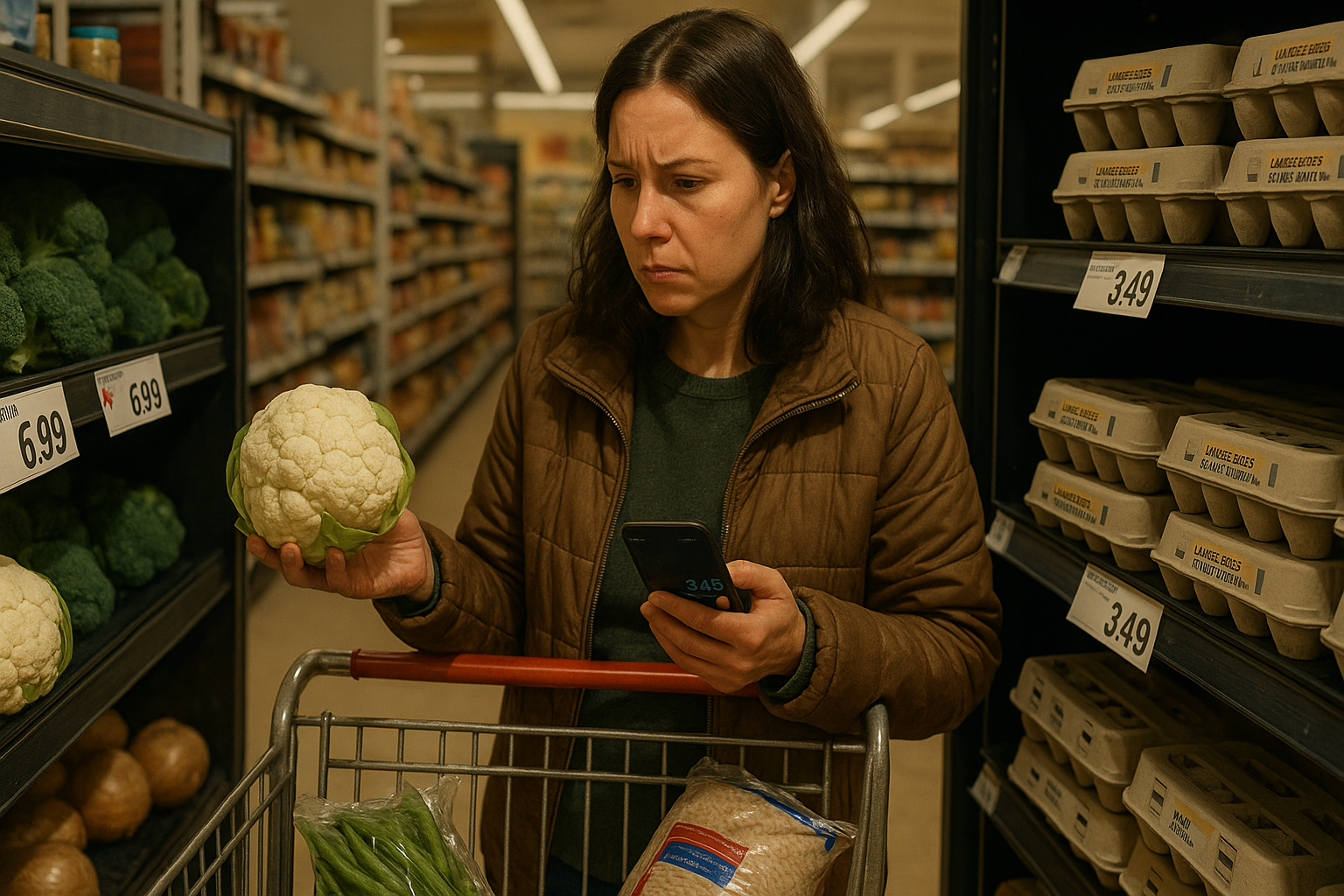Canada's inflation rate ticked up to 2.4% in September, with stubborn food prices remaining the chief culprit behind the country's economic discomfort.
It's a frustrating development for many Canadians. The modest uptick—just a decimal point on paper—continues to translate into real pain at checkout lines across the country, where the gap between official statistics and lived experience feels increasingly vast.
"Every time I go grocery shopping, it's like the prices have jumped again," said Melissa Thornton, a Toronto mother of two I spoke with outside a local supermarket. "The government can say inflation is only 2.4%, but my grocery bill tells a different story."
The Bank of Canada has already cut its key interest rate twice this year, bringing it down from 5% to 4.5%. Now they're caught in an awkward position. Too many cuts too quickly could reignite inflation, while moving too cautiously risks unnecessary economic pain.
Look, central banking has never been a precise science. It's more like trying to steer a massive ship with a tiny rudder—corrections happen slowly, sometimes painfully so, and overcorrecting can be worse than the original problem.
What makes this particularly tricky is what economists call "inflation psychology." When people expect prices to keep rising, they behave differently. They demand higher wages. They stock up on non-perishables. They make different investment choices.
Having covered Canadian economic trends since 2019, I've watched this inflation saga unfold in slow motion. The initial spike in 2021-22 was dramatic enough—hitting forty-year highs that shocked consumers and economists alike. But this lingering aftermath? It's the economic equivalent of a persistent cough that won't quite clear up.
The data shows some reason for optimism. Core inflation measures (which strip out volatile items like food and energy) have behaved relatively well. The job market remains robust, if cooling slightly. Consumer spending hasn't collapsed.
But then there's the grocery situation.
Food inflation has been the stubborn thorn in Canada's economic paw for months now. When a head of cauliflower costs $6.99 and a dozen eggs fetch prices that would have seemed absurd three years ago, people notice. They remember. They plan accordingly.
"We're eating less meat, more beans and rice," said Victor Nguyen, a Vancouver resident I interviewed last week. "My salary didn't go up 20%, so something had to give."
The Bank of Canada now faces a delicate question: did they jump the gun on those initial rate cuts? Many economists think they might have.
"There's always a risk when central banks begin easing before inflation is firmly at target," explained Dr. Amelia Richardson, chief economist at Canadian Economic Partners (whom I've interviewed several times over the years). "The data suggested room to cut, but inflation can be stubborn—especially that last mile from around 2.5% to the 2% target."
One significant factor in the inflation equation? Wage growth.
Canadian wages have been rising faster than productivity—a classic recipe for inflationary pressure. When workers (reasonably) demand higher pay to offset rising costs, and businesses raise prices to maintain margins... well, you can see the circular problem.
The bond market's reaction to the inflation report was predictably nervous. Yields on government debt climbed slightly as traders recalibrated their expectations for future rate cuts. The Canadian dollar weakened against its U.S. counterpart.
For average Canadians, though, market movements matter far less than everyday reality. And that reality remains challenging.
I visited three grocery stores in Montreal's east end yesterday. The scene was telling—shoppers carefully checking prices, comparing store brands to name brands, putting items back after checking the cost. One woman I observed spent nearly five minutes deciding between two different cereal options, calculator in hand.
This is inflation's real impact. Not the statistical measure, but the psychological weight of constant calculation, constant compromise.
Will inflation return to the Bank of Canada's 2% target soon? Possibly. The global factors that helped drive prices higher—supply chain snarls, pandemic disruptions, energy shocks from Russia's invasion of Ukraine—have largely eased.
But the path from here to there isn't straightforward. Inflation at this level—2.4%—sits in that frustrating middle ground. Not high enough to panic, not low enough to celebrate.
For the Bank of Canada, the coming months will require something they're not exactly famous for: nuance. And possibly patience.
For Canadians? More of the same, I'm afraid. More careful shopping. More budgeting. More waiting for economic normalcy that feels increasingly distant.
That's the thing about inflation (and its evil twin, interest rates)—the numbers may be small, but the impacts are anything but.
